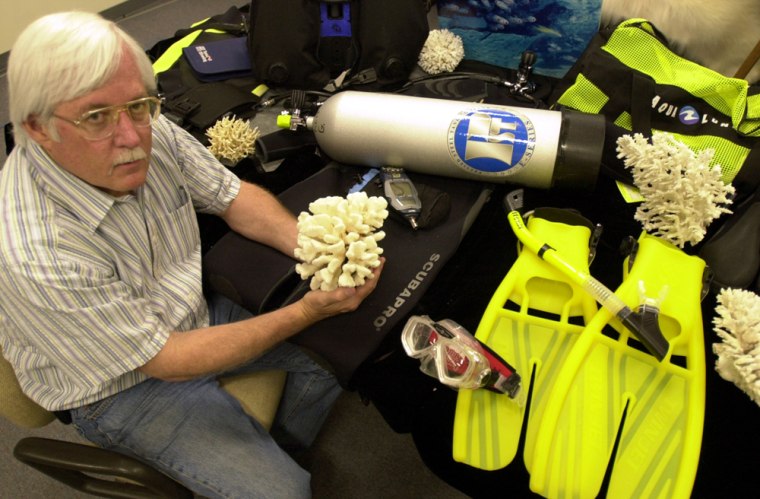When death strikes a coral reef, whether from an oil spill off Mexico or sediment unleashed by a dam bursting in Hawaii, marine biologists know what to look for, but not how to document and preserve their findings so they will hold up in court.
Now biologists and criminalists from around the world are joining forces to develop crime-scene investigation techniques that work under water.
The “CSI”-type standards will govern such things as how to take notes under the sea, how to mark off the crime scene, how to photograph it, and how to preserve the “chain of custody” so that defense attorneys cannot argue that evidence was tampered with.
“This is going to be startling,” said David Gulko, a coral reef ecologist for the state of Hawaii. “Once we have standards accepted by the resource management community within a region, it will no longer be a lone resource manager going up against the paid expert witness with a long list of credentials.”
Coral reefs, some of the most biologically diverse habitats in the world, are suffering from higher ocean temperatures associated with climate change. As much as 40 percent of the coral in waters around the U.S. Virgin Islands died last year.
While no one has figured out what to do about warm water, they can take action against damage from ships spilling oil, running aground or dumping garbage, runoff from farm fields, pollution from factories and cities, sediment deposits from onshore development, and poachers using cyanide and chlorine to flush out fish.
Gulko and his team will present their recommendations at an international symposium in October in Mexico and offer a five-day training session afterward for marine biologists from around the world. Gulko has been put in charge of the project by the International Coral Reef Initiative, which is dedicated to protecting reefs.
Ken Goddard, director of the U.S. Fish and Wildlife Service Forensics Laboratory here and a former homicide cop, is supplying the criminal investigation expertise. He had to take a crash course in scuba diving.
“The coral reef is the body,” Goddard said. “Except I can’t take it in for an autopsy.”
The team has devised a number of investigative techniques to help preserve evidence. Instead of crime scene tape, they use buoys to mark the perimeter, and numbered buoys to mark pieces of evidence, such as paint scraped off a ship’s hull, or burn marks left on shellfish from a poacher using bleach to drive fish out of rock crevices.
Speed is of the essence in gathering evidence. Not only are investigators limited by the air in their tanks, but currents constantly change the scene, and fish swim in and out, sometimes eating the evidence, Goddard said.
To speed up the initial video survey of the reef, Gulko worked with Dive Xtras in Shoreline, Wash., which makes a dive scooter that appeared in “Mission: Impossible III.”’
At Gulko’s request, they put a video camera and two laser beams in the nose of a standard scooter, said co-owner Andrew Georgitsis. Two spots from the lasers show up the same distance apart in every scene, providing scale. A global-positioning satellite unit will imprint latitude and longitude for location reference.
As for taking notes under water, investigators will write with Hello Kitty pencils — a child’s pencil from Japan with quick-change tips that don’t need to be sharpened — on a rough-surfaced plastic slate, then photograph the notes before erasing them.
Though there have been problems with some investigations because of a lack of experience, biologists have not been totally helpless. A developer in Hawaii recently agreed to pay a $200,000 fine for erosion that deposited silt on a coral reef, Gulko said.
Standardized investigative techniques could have a real effect on coral reefs, Stanford University marine ecologist Steve Palumbi said.
“It makes a huge difference in the willingness of people to actually enforce marine regulation,” he said. “It also makes a difference in people being willing to actually follow the rules.”
Goddard said the popularity of the TV show “CSI” has made it easier to enlist the cooperation of people in other countries in developing crime scene standards.
“Everyone knows ‘CSI,”’ he said. “We just mention that term and everyone smiles and nods and says, ‘We understand.”’
